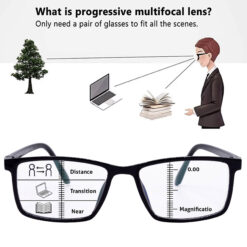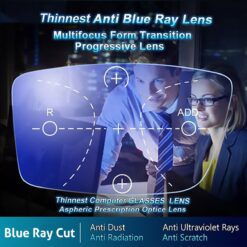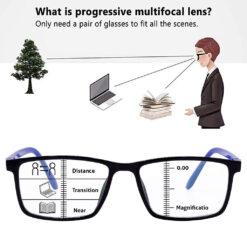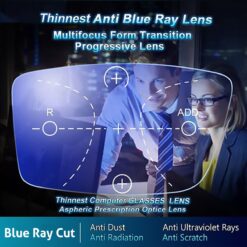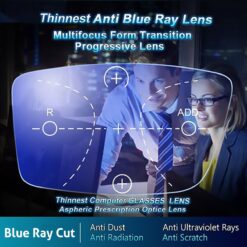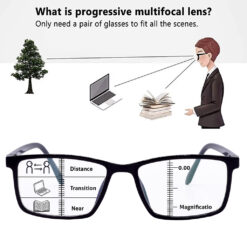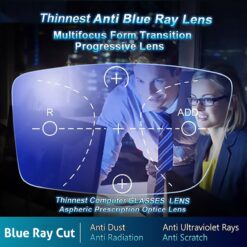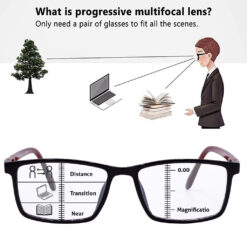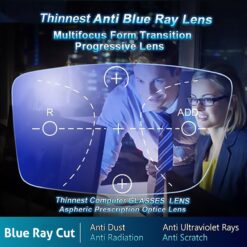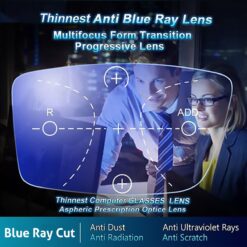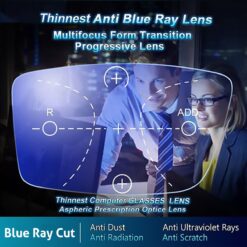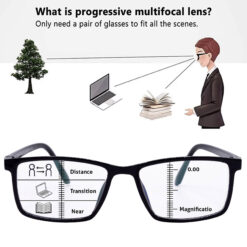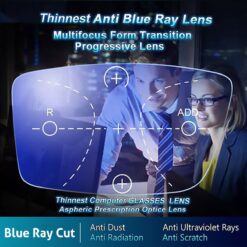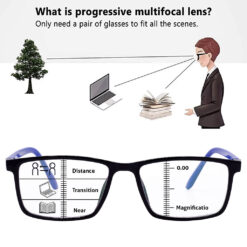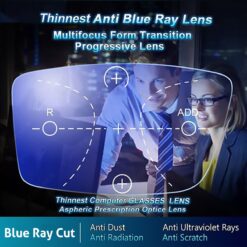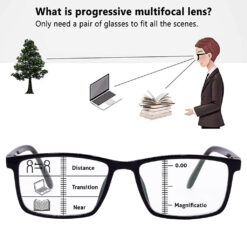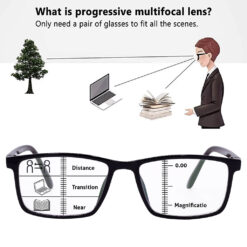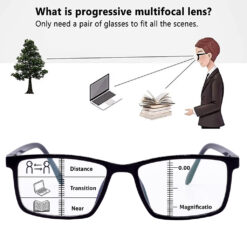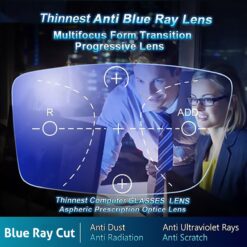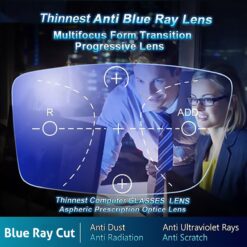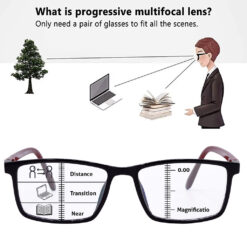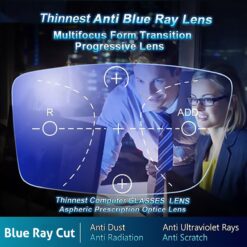Progressive Reading Glasses
Progressive Reading Glasses
Progressive Reading Glasses
Progressive Reading Glasses
Progressive Reading Glasses
Progressive Reading Glasses
Progressive Reading Glasses
Progressive Reading Glasses
Progressive Reading Glasses
Progressive Reading Glasses
Progressive Reading Glasses
Progressive Reading Glasses
Progressive Reading Glasses
Progressive Reading Glasses
Progressive Reading Glasses
Find Your Perfect Reading Glasses Online—Clarity Made Simple
Reading glasses should do three things well: sharpen near text instantly, feel comfortable for long stretches, and match personal style without fuss, and that’s exactly what this category brings together with options like blue cut, anti-glare, and lightweight designs for both men and women to fit daily reading, mobile scrolling, and laptop work with ease while keeping the buying journey quick and clear.
The range includes single vision readers, computer reading glasses, and prescription options for those who need customized correction, with easy filters so shoppers select power, frame size, and lens coating in just a few clicks while staying within a comfortable budget.
Whether it’s mens reading glasses with a sharp, minimal vibe or stylish reading glasses for women in fresh chashma designs, this page helps narrow the right fit without jargon and without guesswork so the first pick feels right on the eyes and on the nose from day one.
What Are Reading Glasses and Who Needs Them?
Reading glasses are near-vision lenses that bring small print into focus, especially useful when near tasks start feeling fuzzy due to natural age-related changes called presbyopia, and while some people grab ready-made readers for convenience, it’s still smart to understand basic lens choices and when a check-up matters for personalized comfort and long-term eye health.
Ready-made reading specs work well for many, but if there’s astigmatism, different powers between eyes, or unique eye spacing, off-the-shelf options may cause strain, so those signals can point toward prescription reading glasses to maintain clarity without headaches or visual discomfort during longer sessions.
A periodic eye exam detects conditions early and refines reading power as needs shift, ensuring the pair bought today still delivers crisp, relaxed vision a year from now instead of becoming a compromise that invites squinting, glare, or constant adjustments.
Presbyopia and Near-Vision Clarity Explained Simply
Presbyopia naturally develops with age and shows up as difficulty focusing on nearby text, so people hold their phone farther away or need brighter light to read, and reading glasses solve this directly by providing plus power that magnifies near content at the distance typically used for books, phones, and laptop screens in daily routines.
For some, a single pair at a common working distance is perfect, while others prefer different powers for closer mobile use and slightly lower power for laptop distance to keep the posture relaxed and the text crisp without leaning forward unnecessarily throughout the day.
If near and far needs vary significantly, a progressive solution could be considered later, but many start with single vision for simplicity and value, then evaluate based on comfort and how often they switch between desk, sofa, and travel situations.
Ready-Made Readers vs Prescription Reading Glasses
Ready-made readers are affordable and fast, ideal when both eyes need the same power and there’s no significant astigmatism, whereas prescription reading glasses match each eye’s exact power and spacing to minimize distortion, maximize comfort, and reduce the risk of headaches during extended reading or screen time.
If wearing someone else’s glasses feels “okay,” that doesn’t make it a good long-term plan, since mismatched powers or pupil distances can introduce subtle strain that builds over hours, so having the right fit matters as much as the right frame style for a genuinely easy reading experience.
When in doubt, a quick exam clears confusion, especially if there’s frequent squinting, ghosting, or glare issues, because small adjustments in power or coatings can transform the experience from tolerable to effortless.
When a Check-Up Matters More Than You Think
Regular exams catch silent issues early and fine-tune power for comfort, which is crucial if ready-made readers lead to headaches, wavy text, or if one eye seems to work harder than the other, all of which suggest it’s time to switch from generic to personalized correction.
Even a minor astigmatism can make off-the-shelf readers feel “almost right but not quite,” and that “almost” often shows up as fatigue after a couple of chapters or a long email session, so a prescription pair can be the difference between pushing through and actually enjoying the read.
If the last check-up was a while ago and near tasks are creeping into discomfort territory, updating the prescription brings immediate relief and protects long-term eye comfort during everyday work and leisure.
How to Choose Your Reading Power Without Guesswork
A common starting point for first-time readers is a low plus power and then adjusting based on clarity at normal reading distance, but it’s not one-size-fits-all because phone distance, laptop posture, and lighting change what feels sharp, so testing small print at typical distances helps pick a power that feels natural.
If different tasks demand different distances—like mobile scrolling at 30–35cm versus laptop at about 50–60cm—some prefer two powers to keep posture neutral rather than hunching or holding the device uncomfortably close, which is a simple, effective way to stay strain-free.
Anyone noticing uneven comfort between eyes, persistent blur, or dizziness with ready-made pairs should consider prescription reading glasses tailored to each eye and exact pupil distance for consistent clarity across the lens.
Different Power for Different Tasks (Books, Phones, Laptops)
For books and phones held close, a slightly higher plus power gives crisp text with relaxed shoulders, while for laptops at arm’s length, a slightly lower power can reduce the “too much magnification” feeling and keep text steady without bobbing the head to chase a sweet spot.
Trying powers near the target is smart because being off by even a small step can turn 30 minutes of reading into a squint-fest, and the right pick will feel like the text “snaps” into focus without effort, which is what keeps reading enjoyable.
If switching powers feels clumsy, consider one middle-ground pair that’s “good enough” across tasks, or add a second pair later for the most-used distance to make everyday routines smoother.
Why One-Size-Fits-All Isn’t Ideal for Astigmatism
Astigmatism means the eye focuses differently in different directions, and ready-made readers don’t correct that, so edges may look smeared or letters may shimmer slightly, which gets tiring over time even if the central text seems okay at first glance.
Prescription lenses that include cylinder correction usually fix that shimmer and stabilize the view from edge to edge, helping the eyes relax so long-form reading or spreadsheet work becomes manageable instead of draining.
If headaches appear after short sessions, that’s a sign to move from generic to tailored, especially when each eye needs a different power or the pupil distance is not “average.”
Lens Options: Blue Cut, Anti-Glare, and Computer Reading Glasses
Lens coatings and filters change comfort dramatically: blue light blocking may help with light sensitivity and evening wind-down, anti-reflective cuts distracting reflections so eyes stay relaxed, and computer reading glasses balance power and coatings for long screen hours where glare and dryness creep in.
Choosing blue cut can be helpful if screens dominate evenings, while AR is a near-essential for anyone bothered by halos, reflections, or washed-out contrast, and combining both is common for people juggling mobile, laptop, and e-reading throughout the day.
If work involves extended screen use, a computer-focused pair with AR and blue cut can reduce visual noise and support better comfort habits, especially when paired with breaks and proper lighting.
Blue Light Blocking: What Research Says and What Users Feel
Some studies and expert commentary suggest blue-light-blocking glasses may promote healthier sleep by supporting melatonin when used before bedtime, and many users report less light sensitivity and squinting under bright screens, even though evidence on eye strain relief is mixed and not definitive.
A randomized trial found no significant difference in eye strain after 2 hours of computer work versus clear lenses, but other small studies and practical reports note perceived comfort gains, so it’s fair to treat blue cut as a comfort enhancer rather than a cure-all.
If choosing blue cut, aim for coverage in the 410–460nm range and remember that blue light coatings are different from UV protection, so confirm UV coverage when needed and pair with sensible screen-time habits.
Anti-Reflective Coating for Clearer Vision and Fewer Reflections
AR coating reduces reflections on the lens surface, making text appear higher-contrast and allowing others to see the eyes more clearly, which feels nicer in bright offices or under overhead lights and is especially helpful for night-time reading with lamps.
AR also helps with those tiny white glare spots in photos and screens, so there’s less distraction and more readable clarity across the lens, particularly on glossy displays or under mixed lighting conditions where reflections otherwise bounce around.
For many, AR is the highest value add after getting the right power, because it works all day, across devices, and doesn’t depend on specific timing like evening-only usage.
Computer Reading Glasses for Long Screen Hours
Computer reading glasses pair the right near power for desk distance with coatings like AR and often blue cut to dial down visual noise from reflections and high-energy light, supporting more relaxed focus on dense text and spreadsheets during work blocks.
While blue cut may not eliminate digital eye strain by itself, the combined effect of correct power, AR, breaks, and better blinking habits often makes long sessions feel less fatiguing and more sustainable.
If late-night work is routine, consider a slightly warmer tint and strict device wind-down so the brain eases into sleep more smoothly after the workday wraps up.
Frame Styles for Everyone: From Minimal to Statement
Mens reading glasses often lean toward clean lines, matte or brushed finishes, and lightweight metals or flexible polymers that sit stable through long sessions, making them easy to wear with formal or casual outfits without feeling heavy or slipping during typing or commuting.
Reading glasses for women range from slim wire frames to modern acetate with color pops, offering stylish reading glasses for women that feel polished without shouting, and the latest chashma design often blends classic silhouettes with subtle geometry for a fresh, confident look at work or home.
Ladies spectacle frames that prioritize lightweight comfort, gentle nose pads, and balanced temples reduce red marks and sliding, which matters far more than expected during multi-hour reading or binge-worthy e-book nights.
Fit and Comfort: Your All-Day Wear Checklist
A great fit feels like forgetting the glasses are there, which comes from the right frame width, adjustable nose pads, and temple length that follows the ear without pressing, and pairing that with lighter materials keeps comfort consistent from the first chapter to the last page.
If a pair keeps sliding, check bridge fit and temple tension, and if hotspots appear behind the ears, minor adjustments can fix it quickly so the frame distributes weight evenly without pinching or leaving imprints.
Coatings like AR and blue cut also change subjective comfort by reducing glare bursts and harsh light, which makes the entire visual field calmer and easier on the eyes.
Why Lens Coatings Change Perceived Comfort
Reflections on lenses act like micro-distractors that the brain constantly filters, so AR reduces that background noise and can feel like the display turned “clearer” even when the text size stays the same, which is a simple, practical win for daily reading comfort.
Blue cut adds another layer by muting harshness from certain wavelengths, which some people perceive as less squinting and fewer end-of-day headaches, especially under bright LED lighting or when switching between multiple screens repeatedly.
Together with the right power, these coatings often convert “tolerable” reading into “effortless,” which is the difference most shoppers actually seek.
Blue Light, Sleep, and Eye Comfort: Practical Advice
Blue light glasses may help with light sensitivity and potentially support better sleep latency when used before bed, though they aren’t a stand-alone fix for digital eye strain, so it’s wise to also manage screen time, keep ambient light balanced, and schedule short breaks during long reading sessions.
Dryness often comes from reduced blinking while focusing, so frequent micro-breaks and conscious blinking help more than any single lens feature, with blue cut working as an add-on comfort tool rather than an all-purpose solution.
For evening readers, combining blue cut with dimmer, warmer ambient light and device settings can create a calmer visual environment that makes winding down feel more natural.
Single Vision Reading Glasses vs Alternatives
Single vision glasses keep near tasks crisp at a set distance and are the simplest starting point, while those frequently toggling between near and intermediate may consider a second pair or, later, a progressive lens to avoid swapping, depending on comfort and routine.
If different powers are needed for each eye, a prescription pair provides symmetrical clarity and proper alignment, reducing subtle strain that otherwise creeps in after an hour or two, especially with dense documents or coding sessions.
People who tried multi-focus novelty readers that claim to “auto adjust” often find the clarity varies with gaze angle, so matching exact power to distance remains the dependable approach.
Prescription Tweaks for Asymmetry or Astigmatism
When one eye needs more plus power or cylinder correction, prescription reading glasses give stable, edge-to-edge clarity, letting both eyes share the workload evenly, which feels smoother and reduces the urge to tilt or hunt for a sharp spot in the lens.
The correct pupillary distance ensures the optical center aligns with the eyes, which is critical for comfort during long reads and especially noticeable with higher powers where small misalignments become more obvious.
If text appears to shimmer or smear, that’s a classic hint to correct astigmatism properly rather than forcing a generic reader to do all the heavy lifting.
Budget vs Premium: What’s Worth Paying For
Affordable reading glasses can be excellent value when the basics are right—accurate power, comfortable fit, and AR coating—so prioritize clarity and comfort before chasing extras, and then add blue cut if screens dominate mornings or evenings.
Premium picks often justify the cost with better materials, durable hinges, refined finishing, and high-quality coatings that resist scratches and smudges, meaning fewer replacements over time and a consistently clear view day after day.
If budget allows two pairs, many shoppers choose a “work pair” with AR+blue cut and a lighter “relax pair” for books or magazines, reducing wear and tear while keeping the best tool ready for each routine.
Category UX That Saves Time on opticalindia.com
Efficient category pages help shoppers compare fast, so use filters by power, frame style, width, material, and lens options to narrow in seconds, then scan grid cards for ratings, key features, and quick-add options to cut extra clicks and reach the right product page only when needed.
Switching between grid and list views suits different moods—grid for visual scanning of styles and list when details like coatings and measurements matter more—reducing friction and nudging faster, more confident choices.
A wishlist or quick-compare allows side-by-side checks on weight, lens features, and price, so the final selection feels deliberate instead of rushed, which usually leads to happier long-term use.
Product Comparison: Blue Cut vs Anti-Glare vs Computer Readers
Blue cut aims to reduce perceived harshness from screens and may support evening wind-down, anti-glare cuts reflections to improve contrast and reduce visual noise, and computer readers bundle the right power with AR and often blue cut for longer, calmer desk sessions across apps and documents.
For heavy mobile use at close distance, blue cut plus AR in the right power keeps text snappy and reduces glare flicker; for mixed laptop and reading, computer readers strike a comfortable balance throughout standard work blocks with fewer distractions.
If choosing only one coating, AR remains the most universally useful for clarity and comfort across lighting conditions, with blue cut as a targeted upgrade for screen-heavy routines.
Which Pair to Use for Mobile vs Books
For mobile scrolling at closer distances, a slightly higher plus power with AR and optional blue cut keeps fine text crisp and reduces the urge to squint under bright LEDs, while for books at a steady distance, AR with the correct power often suffices unless evening reading is routine, where blue cut may add a calmer feel.
If books are read outdoors or near windows, AR helps with reflections and makes print look darker and steadier, which is surprisingly noticeable on glossy pages or coated paper under bright light.
When switching between paperback and phone frequently, a middle-ground power can stop the constant on-off dance and keep both tasks comfortable for longer stretches.
Care Tips: Keep Clarity High and Scratches Low
Use a microfiber cloth and proper lens spray to avoid micro-scratches that slowly lower clarity, and store glasses in a case instead of leaving them lens-down on tables where dust and grit act like sandpaper during quick wipes.
Avoid hot water and paper towels, as they can damage coatings and leave scratches, and keep a travel-sized cloth handy to stop the “shirt wipe” habit that slowly dulls lenses over time.
A few seconds of proper cleaning preserves AR and blue cut performance, keeping the view crisp and glare-free without needing constant polishing.
Coating-Friendly Habits That Pay Off
Rinse dust before wiping to prevent grinding particles across the surface, use mild cleaners designed for lenses, and let them air dry or pat gently, which keeps coatings intact and extends lens life significantly.
If smudges return quickly, check for worn nose pads or skin oils collecting at contact points and clean those areas too, which reduces build-up and keeps vision sharper between full cleans.
Storing glasses in a hard case during commutes prevents bends and loose screws, which keeps alignment true so the optical centers stay where they should.
Common Myths and Quick Fixes
Myth: “Blue light lenses solve eye strain.”—Reality: breaks, blinking, and proper power matter most, while blue cut may help with light sensitivity and evening comfort but doesn’t replace good viewing habits or correct ergonomics.
Myth: “Any reader with the right number works the same.”—Reality: AR, fit, and correct pupillary distance can transform comfort, and astigmatism or unequal powers often require prescription reading glasses for stable clarity.
Fix: Start with the right power for the task, add AR as the baseline coating, consider blue cut for evening or heavy-screen work, and maintain cleaning habits that protect coatings and keep vision crisp long term.
2025–2026 Trends in Reading Glasses
Expect lighter materials with flexible bridges for comfy all-day wear, combined with advanced coatings that resist smudges and scratches better, making maintenance easier and clarity more consistent between cleanings in fast-paced, device-heavy routines.
Subtle functional tints that reduce specific glare while keeping colors true are gaining attention, especially for mixed indoor lighting across work and home, balancing comfort with natural-looking vision that doesn’t feel tinted or distracting.
Designs are skewing toward timeless silhouettes with small modern twists—think slender rims with sculpted temples—so upgrading doesn’t mean chasing fad shapes while still feeling current in daily settings.
Trust Signals: What Smart Shoppers Check
Check accurate power ranges, clear lens feature labels, frame measurements, and return policies that make exchanges hassle-free if the first fit isn’t perfect, which reduces purchase anxiety and speeds up decision-making on a category page.
Visible ratings and concise reviews help filter options quickly, while consistent specs and clear photos build confidence that the pair delivered will match expectations without surprises or gaps in information.
Easy access to care tips and size guides signals the store cares about long-term satisfaction, not just the checkout click, which is a reassuring sign when buying eyewear online.
Final Picks: Build a Two-Pair Rotation
A smart, simple setup is one pair optimized for desk work—AR plus blue cut at laptop distance—and one pair tuned for book or mobile reading with the right power for closer tasks, which avoids compromise and extends the life of each pair by sharing daily mileage.
For travel or commutes, a slim case with a lightweight reader keeps tiny text like menus or labels easy, and that little convenience often prevents eye strain from creeping in during rushed moments.
Start with the most-used scenario, nail that fit, and then add the second pair when the routine is clear, keeping each focused on the job it does best for maximum comfort and clarity.
Conclusion: Choose Readers That Match Real Life, Not Hype
Reading glasses should feel natural from the moment they’re on—clear text at the right distance, comfortable frames that don’t slide, and coatings that keep reflections and harsh light in check—and that happens when power, AR, and fit come first, with blue cut added thoughtfully for screen-heavy evenings rather than as a miracle cure.
A two-pair setup covers work and leisure without compromises, and with simple care and quick filters on the category page, picking the right pair becomes fast, confident, and cost-effective so reading remains a pleasure, not a chore day after day at home or on the go.

